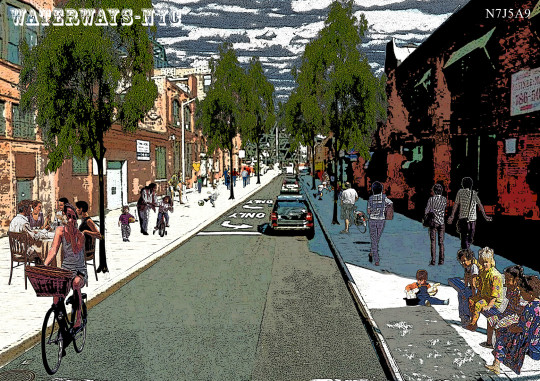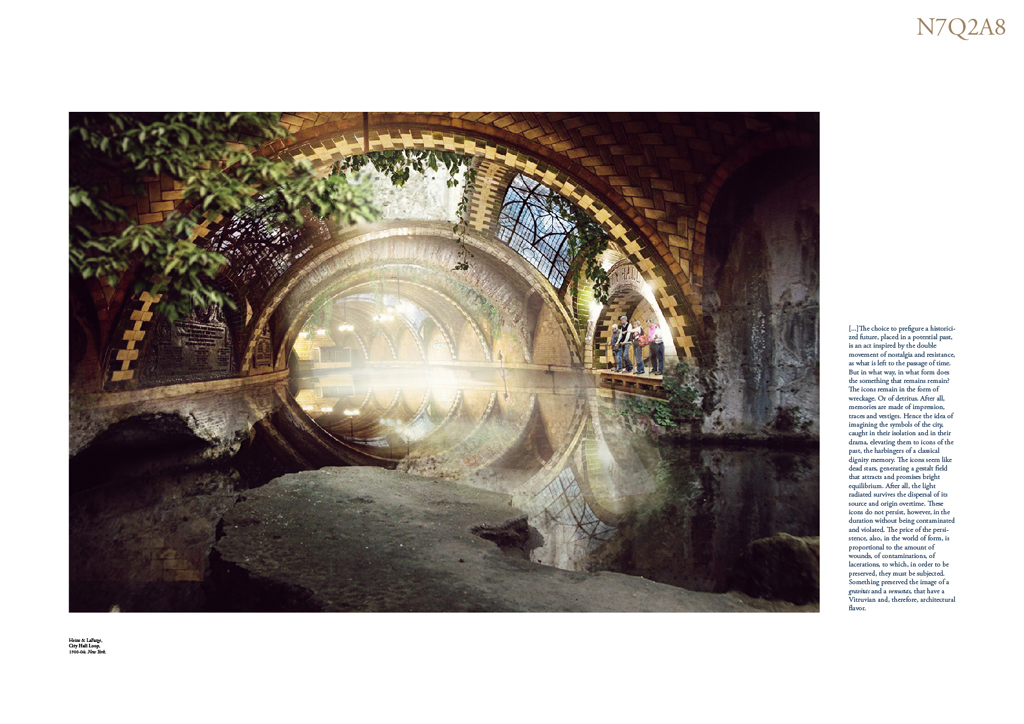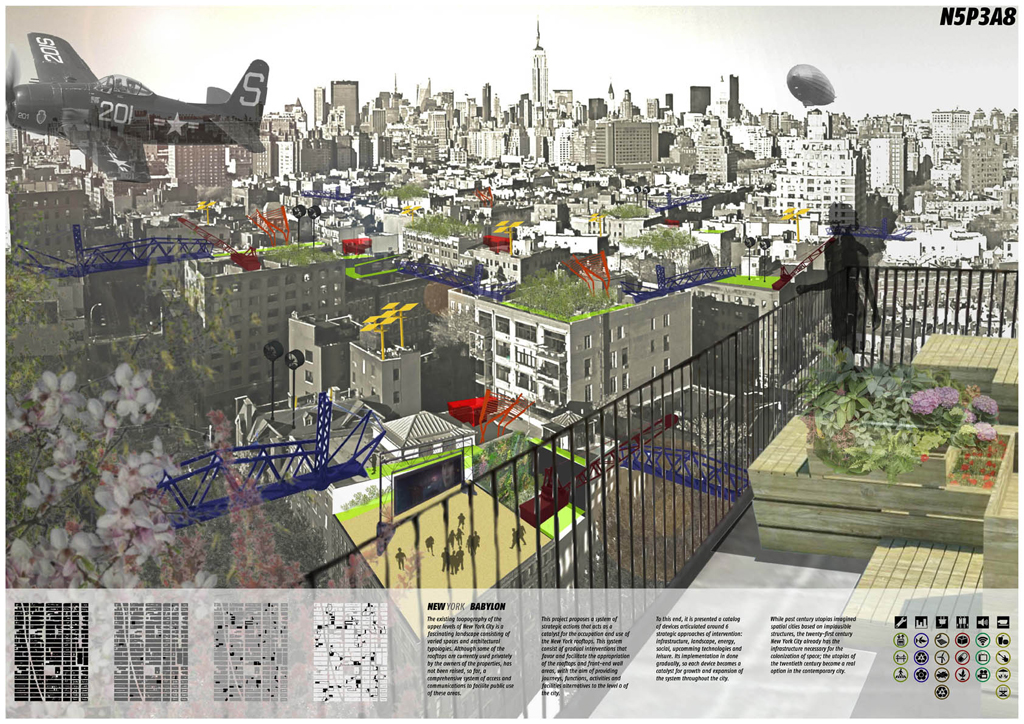Info:
Title: WATERWAYS - Code: N7J5A9Contest: NY / 2012
By: Honoré van Rijswijk
Views: 3232 Likes: 1
Votes:
JOSHUA PRINCE-RAMUS0 EVA FRANCH I GILABERT0 ROLAND SNOOKS2 SHOHEI SHIGEMATSU2 ALESSANDRO ORSINI1 MITCHELL JOACHIM00.8
WATERWAYS
 - NYC New York City is a product of the American society; the American philosophy of economic and cultural freedom and social and political equality is reflected in the city planning. Individualism and the desire for a new future was, in the past, the primary reason for immigration to the city. In the nineteenth century a large grid network was planned for New York City. The uniformity and continuity of the street network guaranteed that the government would treat public areas equally and that every part of the city would be accessible for all citizens. However, the network was rigid and did not take into consideration the surrounding natural landscape. Through the fast expansions of the city and the harbor, the waterfront became part of city life. The grid network was extended through a series of streets to the quays and piers. In the second half of the century there was a deliberate attempt to bring a new dimension to New York City through the design of the great urban parks and parkways. This park system created a collective identity and improved communal quality of life in the city.
- NYC New York City is a product of the American society; the American philosophy of economic and cultural freedom and social and political equality is reflected in the city planning. Individualism and the desire for a new future was, in the past, the primary reason for immigration to the city. In the nineteenth century a large grid network was planned for New York City. The uniformity and continuity of the street network guaranteed that the government would treat public areas equally and that every part of the city would be accessible for all citizens. However, the network was rigid and did not take into consideration the surrounding natural landscape. Through the fast expansions of the city and the harbor, the waterfront became part of city life. The grid network was extended through a series of streets to the quays and piers. In the second half of the century there was a deliberate attempt to bring a new dimension to New York City through the design of the great urban parks and parkways. This park system created a collective identity and improved communal quality of life in the city.
After the explosive growth of the car industry, New York City tried to accommodate the new American way of living. This proved to be catastrophic, the large-scale expressways, motorways and privately driven urban regeneration projects created a fragmented and desolate city. New York lost her spirit and soul and is today still in the process of developing strategies to revitalize the collective urban domain.
The proposed waterways will re-connect New York City to its primary natural landscape: the rivers, canals, creeks and Atlantic Ocean. The initiative will also be incorporated into the great urban parks, squares, streets and boulevards and encourage new green infrastructure.
The waterways will be strategically integrated into the city, connecting communities and neighborhoods and becoming a new public domain for the New Yorker. The sidewalks on the waterways will be modified into vital walking and cycling routes, a place for residents and visitors to socialize, exchange thoughts and share public spaces and facilities.
New York City will flourish again, re-discover her assets and respond positively to the changing demand in American society, where unity is the key driver for future regeneration.






